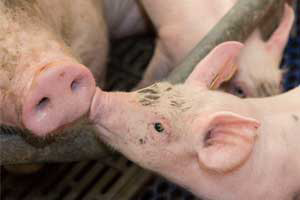A plan published to deal with PEDV

Identify, contain and eliminate are the key elements of a contingency plan for dealing with Porcine Epidemic Diarrhoea virus (PEDv), just published.
It is the brainchild of the Pig Health and Welfare Council and is a living document which will evolve and develop over time.
The plan focuses on the control and elimination of PEDv but a broadly similar approach could be used to tackle other significant new and emerging diseases, such as highly pathogenic strains of PRRS from the US or Asia.
The approach taken to the control and elimination of PEDv will be cascaded as follows:
– Strategic
– Operational
– Tactical
The plan contains a primary and secondary strategy. Strategy 1 will be based on an outbreak infection up to a maximum of five individual pig units with targeted intensive epidemiological investigation, interventions and monitoring.
Strategy 2 will be adopted following confirmation that an outbreak has occurred on more than five individual pig units. It is considered that at this point a broader approach to PEDv control and elimination will be required as it is highly likely infections will become more widespread.
The plan has been facilitated by BPEX and Martin Smith, veterinary team manager, said: “The effectiveness of the PEDv Contingency Plan is reliant on the support and commitment from the industry and supply chain.
“PEDv can spread very easily by direct contact with infected pigs or indirect contact with faeces from infected pigs or material contaminated with faeces from infected pigs. With robust national and farmgate biosecurity there is no reason why PEDv should ever come in contact with pigs on British farms.”
Should the worst happen, a Government and industry Disease Outbreak Steering group would be set up.
This group would implement the initial disease containment and elimination strategy focused on the first three to five herds infected. The group would, at that point, review the risk of onward spread. If the risk is high that the disease had spread more widely there may need to be a change in emphasis to general support for containment, control and elimination.
Martin said: “Early identification of infection is vital for this plan to succeed and farm workers will be on the front line so must be aware of signs of the disease and the importance of contacting their vet as soon as possible to get unusual clinical signs checked out.
“This plan is an excellent start but is a framework and much more work needs to be done filling in the details and identifying people and organisations who will be involved.
“We can all hope PEDv never does reach our shores but it would be foolish to ignore the risks when there is so much at stake.”
The latest version of the plan can be found here.











